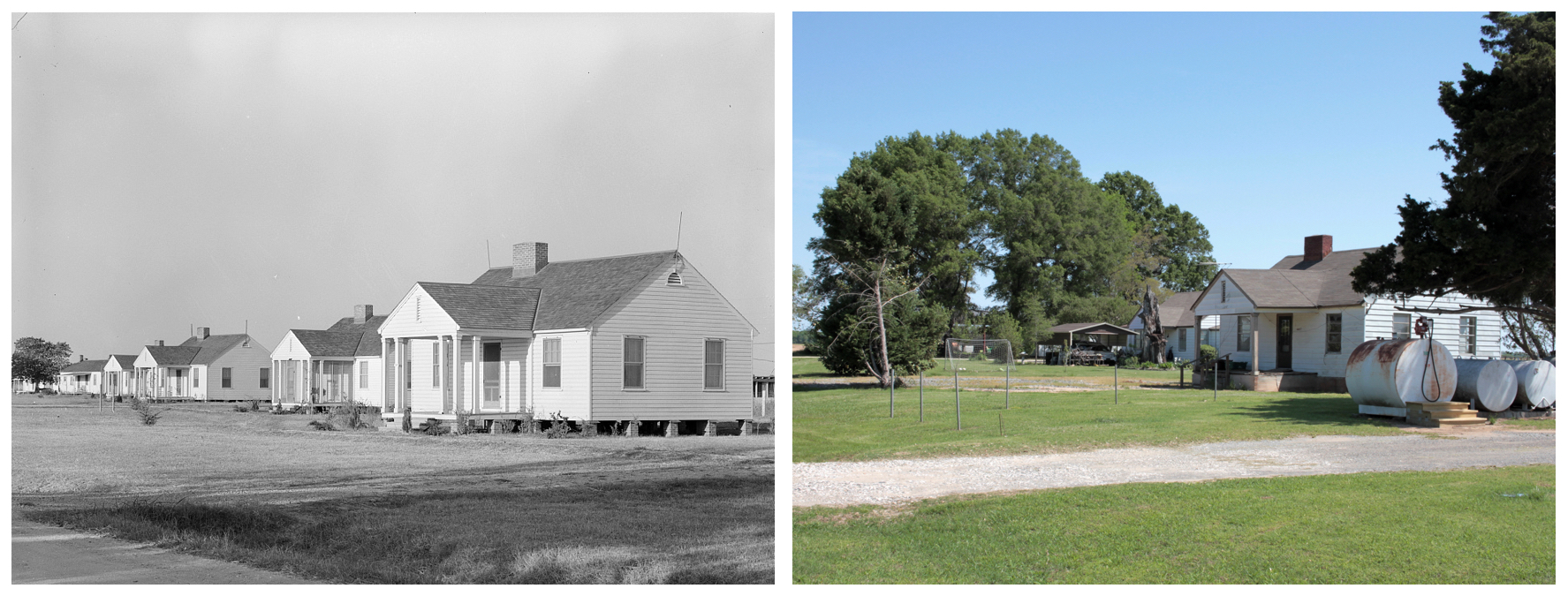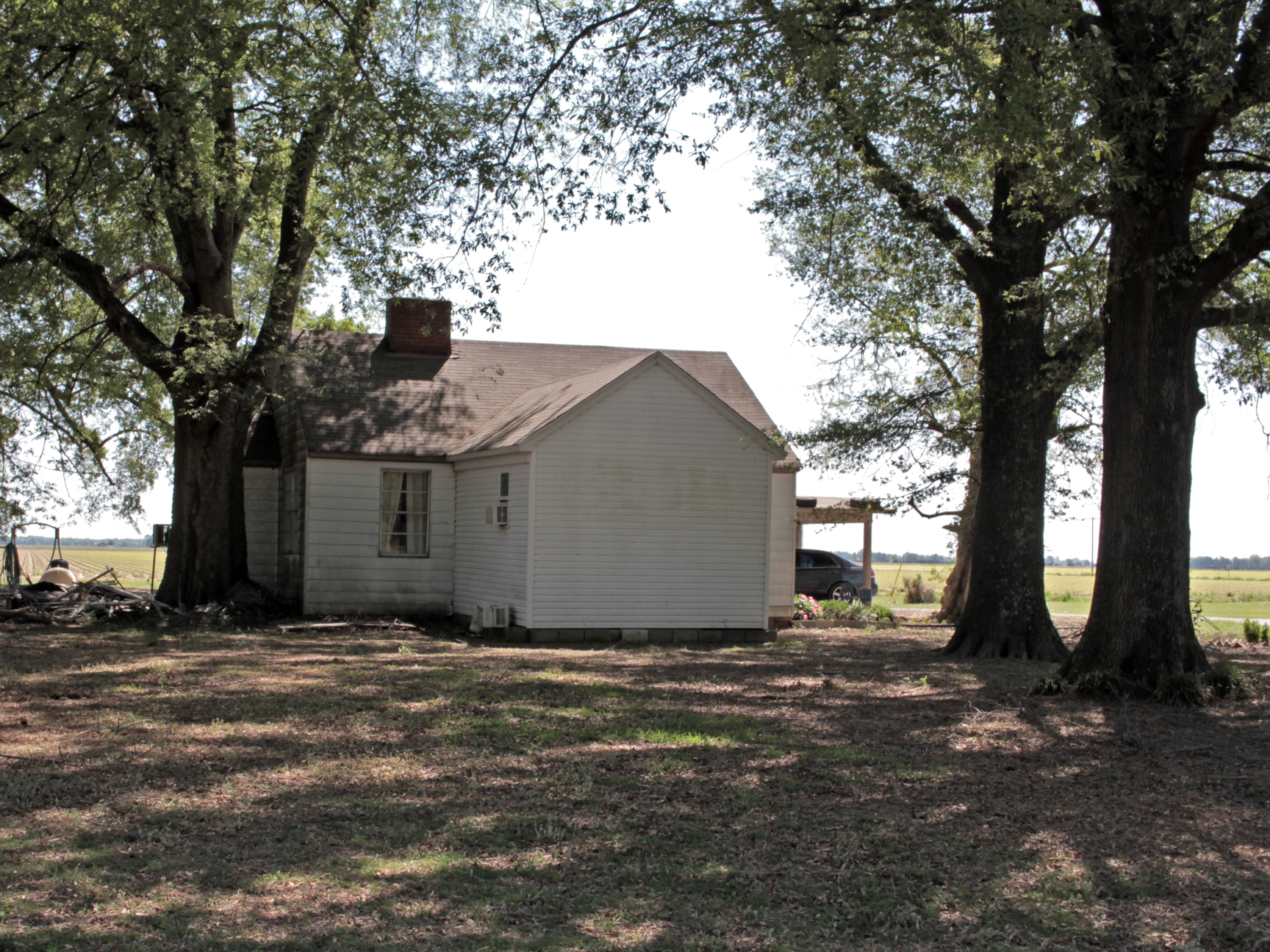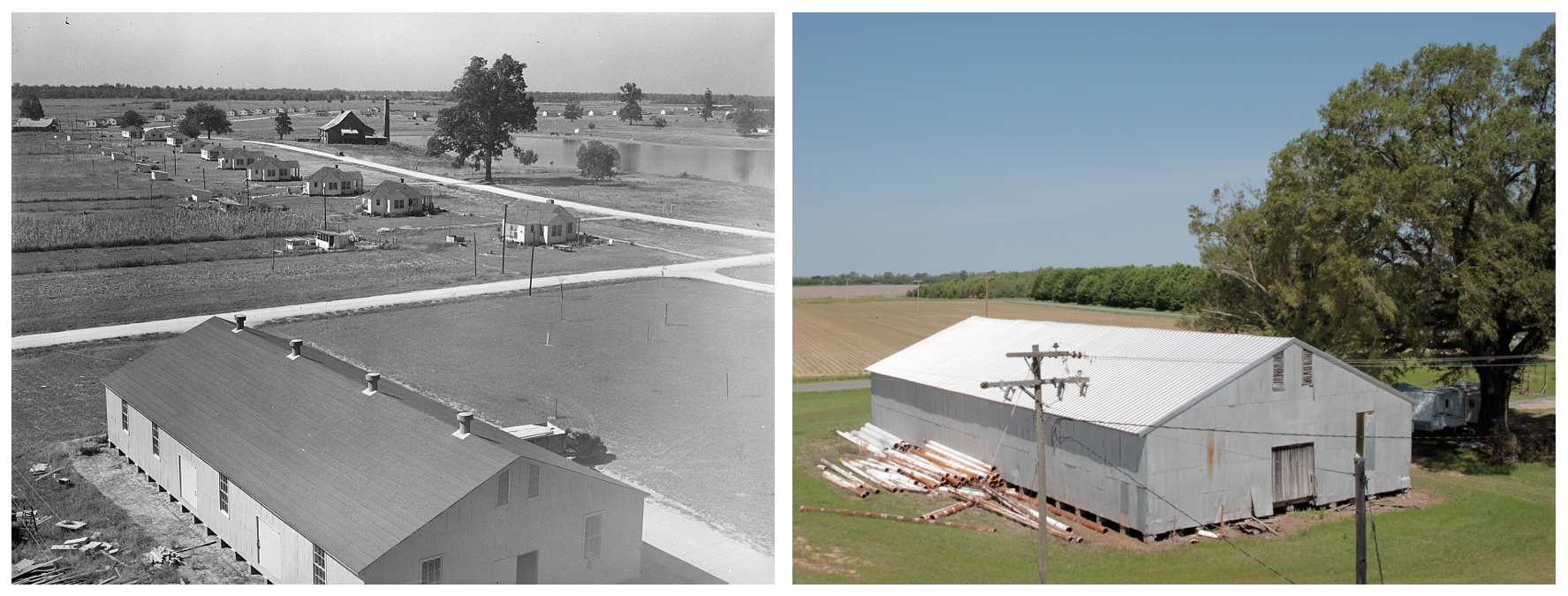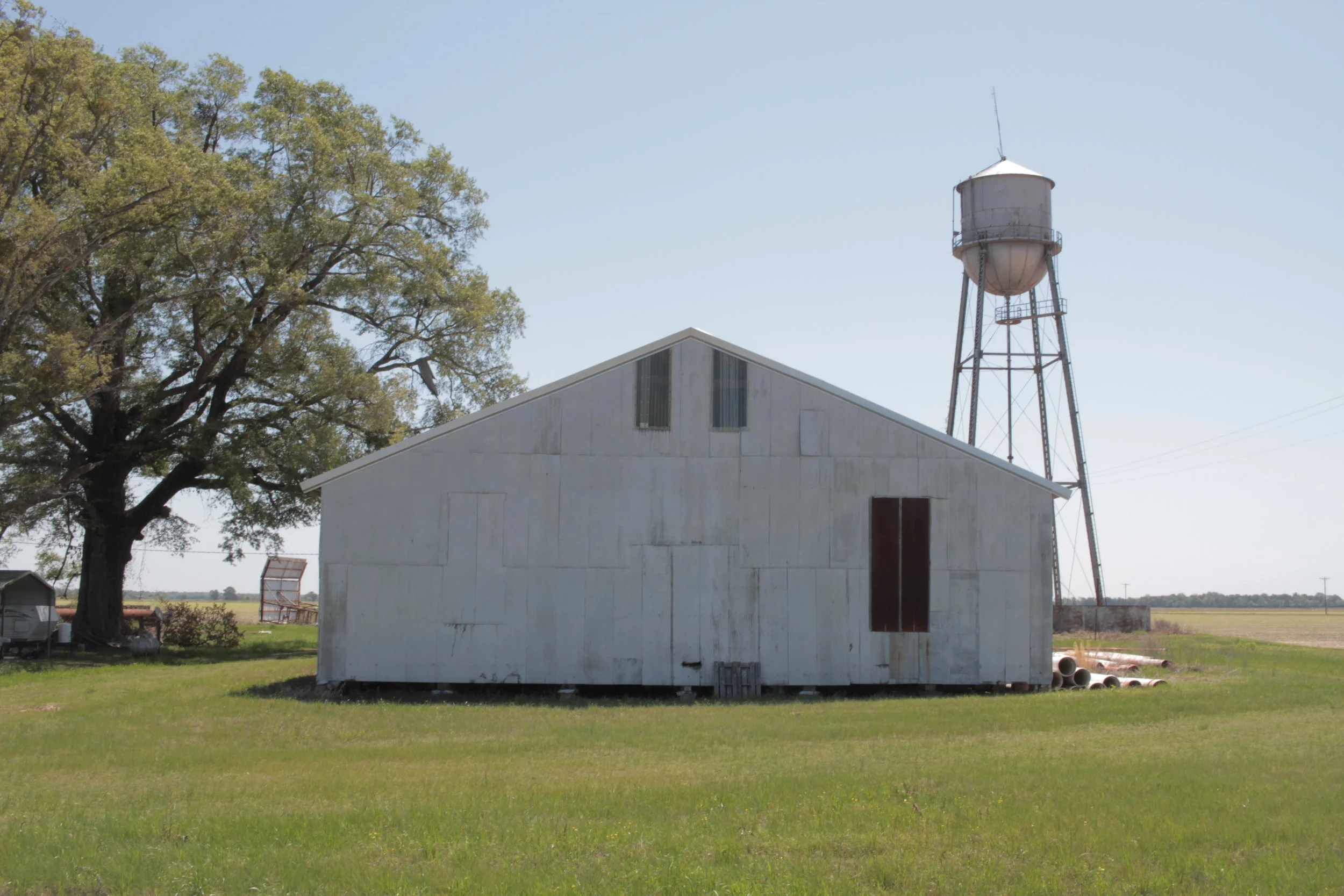The Lake Dick Cooperative was an experimental New Deal project to help establish struggling families – white families, it should be noted – on farms of their own around Lake Dick, an oxbow just across the Arkansas River from Pine Bluff. Families from 29 Arkansas counties were selected. The project, according to the Encyclopedia of Arkansas, had "the twin goals of establishing a cooperative community of farmers, and assisting sharecroppers and tenant farmers to become independent landowners." It would function as a cooperative until near the end of World War II.
The Resettlement Administration, which had initiated the project in 1936, soon became part of the Farm Security Administration, and in the fall of 1938, the FSA sent photographers Russell Lee and Dorothea Lange to photograph the settlement, including the newly built houses that lined the lake. (There are more than a hundred photos from Lake Dick by Russell Lee and Dorothea Lange – everything from domestic life to cotton cultivation – at the FSA catalog on the LOC website.)
According to a National Register of Historic Places nomination form filed in 1975:
"[The Lake Dick Resettlement Project] consisted of 80 houses of four to six rooms each, six community buildings, three mule barns ... The houses and community buildings were of simple one-storey frame construction with very plain lines and no decorative features. ...
"Most of the community buildings have been removed; however, the school-gymnasium still remains. It is used for storage, as a repair shop, and also houses farm offices ... Of the three large mule barns, only the south barn remains. ...
"About three-fourths of the original houses have been moved away from Lake Dick. The remaining houses, about 30, are those closest to the community center complex. These have recently been covered with white aluminum siding and reroofed with red shingles."
Later, the historian preparing the form slips momentarily from facts and documentation into commentary: "The land which once served a socialistic farming cooperative is now owned and operated by a single farming concern. Employees of the large landowner now occupy the houses built for members of a profit-sharing farming enterprise."
And while there may have been about 30 houses remaining in 1975, when we visiting earlier this week, only four of the houses could be found, and one old mule barn south of the lake.
In an interesting side note, the Lake Dick area seems to have been the birthplace of blues great Big Bill Broonzy, according to an oral history interview with music writer and researcher Bob Reisman. Reisman recounts speaking on the phone to Broonzy's mother "and, in fact, was able from that point forward to determine that Big Bill Broonzy in fact had been born not in 1893, but in 1903 and not in Scott, Mississippi but in Jefferson County, Arkansas about 65 miles southwest-- sorry, southeast of Little Rock near Lake Dick."







